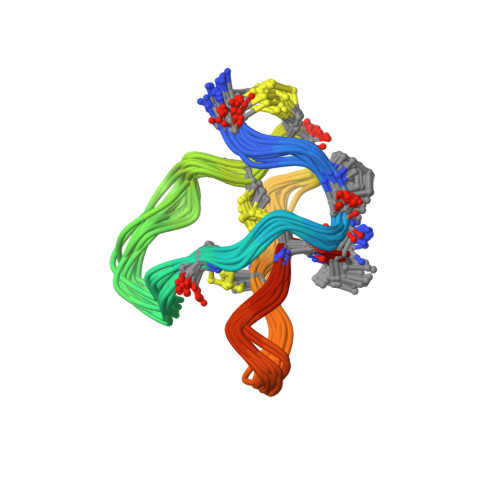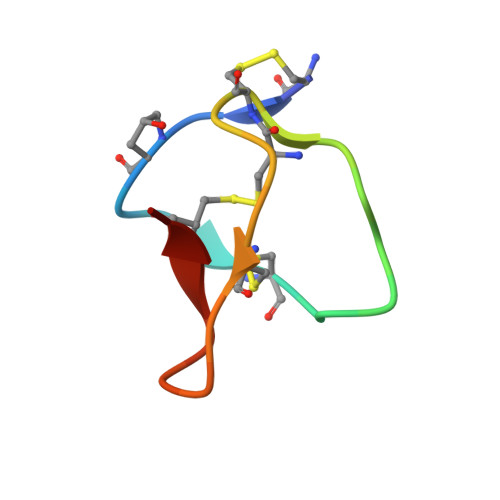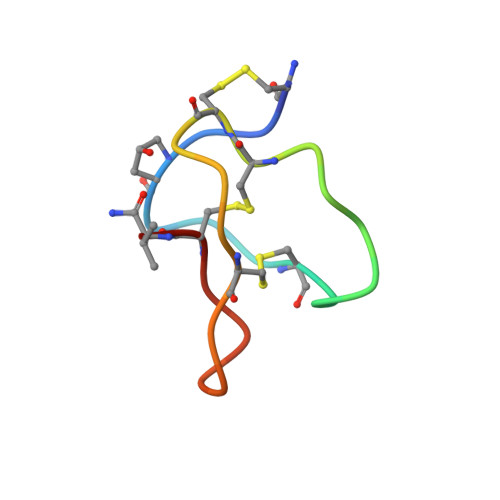Three-dimensional structure of kappa-conotoxin PVIIA, a novel potassium channel-blocking toxin from cone snails.
Savarin, P., Guenneugues, M., Gilquin, B., Lamthanh, H., Gasparini, S., Zinn-Justin, S., Menez, A.(1998) Biochemistry 37: 5407-5416
- PubMed: 9548922
- DOI: https://doi.org/10.1021/bi9730341
- Primary Citation of Related Structures:
1KCP - PubMed Abstract:
kappa-Conotoxin PVIIA from the venom of Conus purpurascens is the first cone snail toxin that was described to block potassium channels. We synthesized chemically this toxin and showed that its disulfide bridge pattern is similar to those of omega- and delta-conotoxins. kappa-conotoxin competes with radioactive alpha-dendrotoxin for binding to rat brain synaptosomes, confirming its capacity to bind to potassium channels; however, it behaves as a weak competitor. The three-dimensional structure of kappa-conotoxin PVIIA, as elucidated by NMR spectroscopy and molecular modeling, comprises two large parallel loops stabilized by a triple-stranded antiparallel beta-sheet and three disulfide bridges. The overall fold of kappa-conotoxin is similar to that of calcium channel-blocking omega-conotoxins but differs from those of potassium channel-blocking toxins from sea anemones, scorpions, and snakes. Local topographies of kappa-conotoxin PVIIA that might account for its capacity to recognize Kv1-type potassium channels are discussed.
Organizational Affiliation:
CEA, Département d'Ingénierie et d'Etudes des Protéines, Gif-sur-Yvette, France.

















